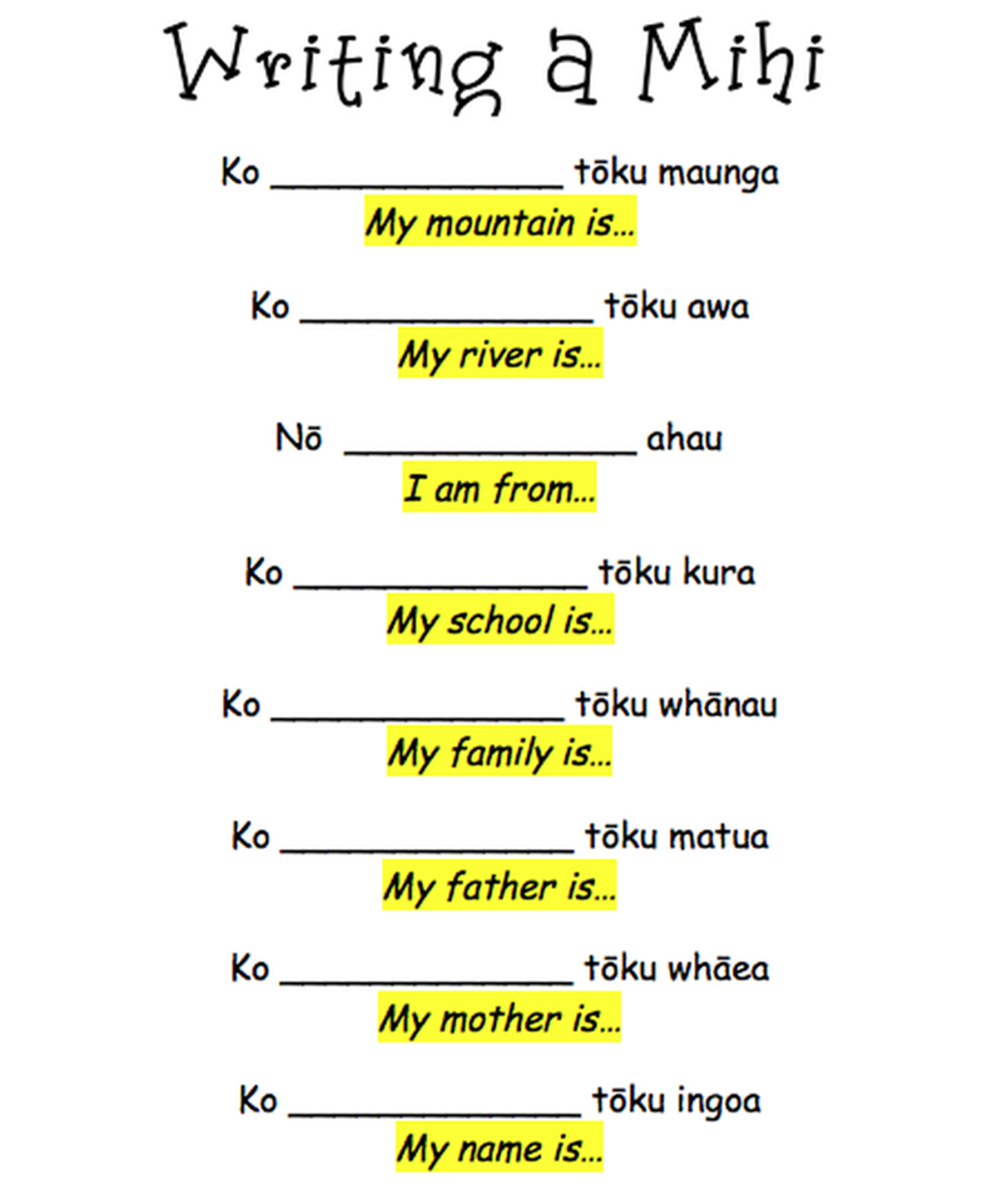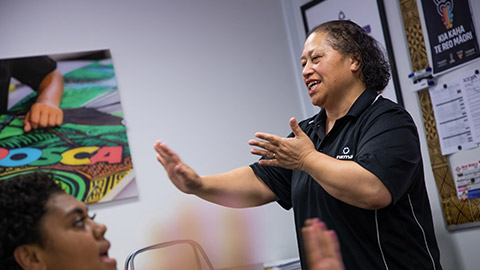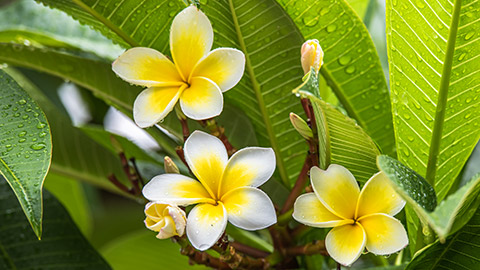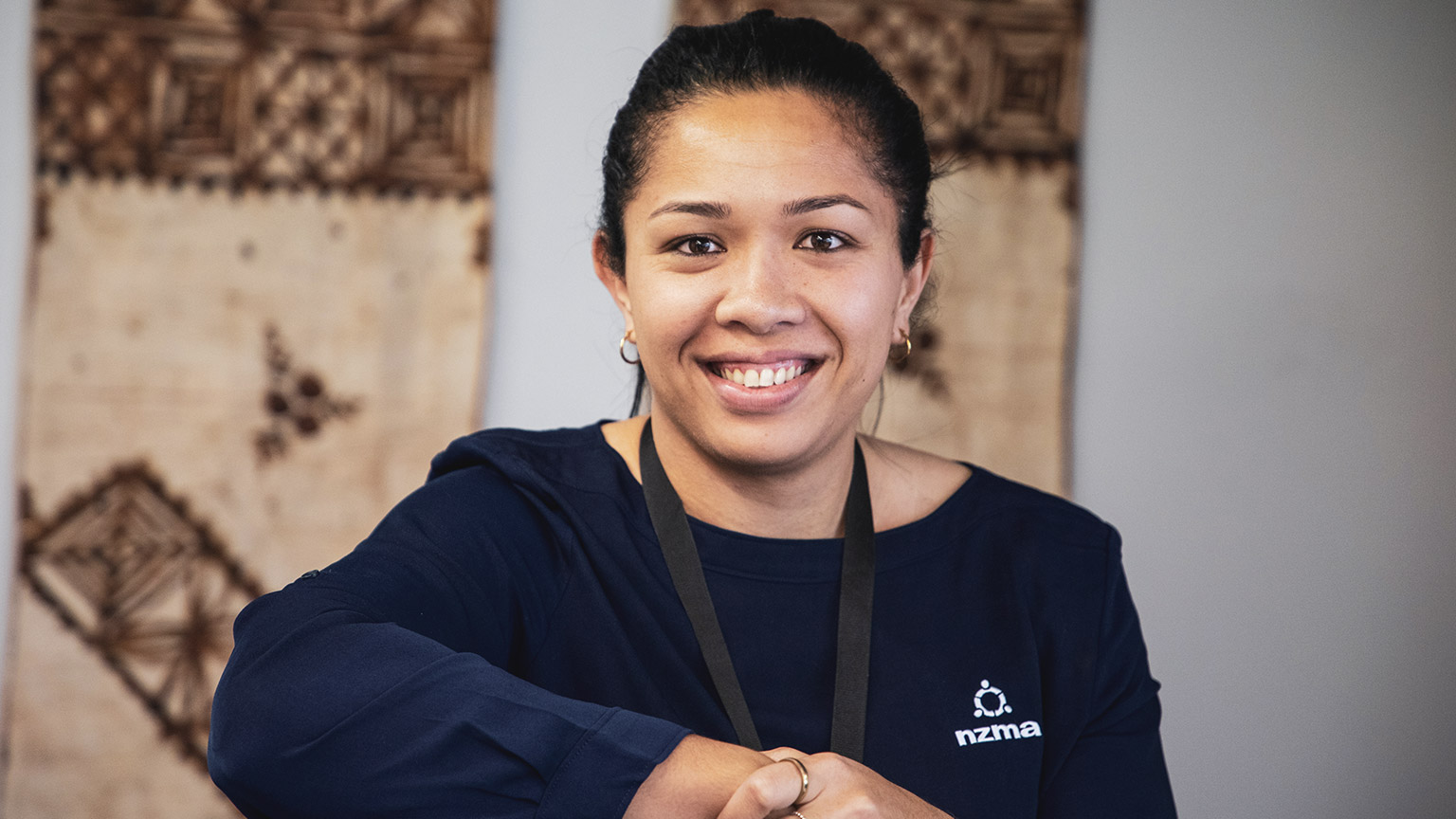In the world of aged care, it's important to realise that caring isn't just about one person. It involves understanding how families and our ancestors (whanau and whakapapa) are part of the picture. As support workers, knowing how much family means and understanding where someone comes from can make a big difference. Whanau means more than just family – it's about the people who provide comfort and a sense of belonging. And whakapapa is like a family tree that shows a person's background and culture. In this learning section, we'll explore why it's so important to respect and include whanau and whakapapa in aged care. This helps us honour each person's unique story and the shared experiences that have made them who they are.
Whakapapa
In Māori culture, whakapapa, or genealogy, is a fundamental concept. Reciting your whakapapa is an introduction to yourself and your Māori identity.
It includes your ancestors and the area you belong to. Whakapapa is important as it connects tangata to their family history. Whakapapa is expressed through pepeha.
Whānau (family) will be included in a whakapapa.
- Great Grandmother (Tūpuna Wahine)
- Great Grandfather (Tūpuna Tāne)
- Grandmother (Kuia)
- Grandfather (Koroua)
- Mother (Whaea)
- Father (Matua)
- Children (Tamariki).
Whakapapa not only links people but also connects them with their ancestral land. Māori have strong links with the land and will have affiliation to a mountain, a river, a waka and their tūrangawaewae (place of belonging).
It’s important in Māori culture as it shows where someone has come from, linking a person to the land and their iwi (tribe).
Whakapapa in the workplace
Pepeha and Mihi
What is the difference between a Mihi and a Pepeha?
A mihi is a greeting, while a pepeha is a form of introduction that establishes identity and heritage. In formal situations, the pepeha is part of a person’s mihi. A group situation where everyone gives their mihi (including their pepeha) is called a mihimihi.
Watch
Watch the following video, called ‘Ko wai tō pepeha? What is your pepeha?’, for a short explanation of the meaning and importance of a pepeha.
In the health sector in New Zealand, knowing how to do a mihi is important because it helps build strong connections with Māori clients, their families, and colleagues. It shows cultural respect and understanding, which is crucial for providing effective and compassionate care. Using a mihi can create a welcoming atmosphere and help establish trust, which is vital in healthcare settings where communication and relationships play a significant role in client well-being.
Being able to recite a mihi to an elderly Māori client would help to establish a strong cultural connection and build trust with Māori clients and their communities.
Watch
Watch the following video, called ‘Introduction to te reo – giving your mihi’, for an example of identifying and sharing your mihi.
Writing your mihi
Use the following format to write your own mihi.

Activity - Reflection
Read the scenario and reflect on the question provided.
Meet Sarah, a support worker at an aged care facility in Auckland. Today, she's assigned to care for Mr. Henare, a Māori resident who has recently moved in. As Sarah enters Mr. Henare’s room, she notices a photo on the bedside table showing him surrounded by family members at a gathering. Before starting her caregiving tasks, Sarah takes a moment to introduce herself with her mihi and asks Mr. Henare about the photo. He smiles warmly and begins to share stories about his family, highlighting the importance of whanau in his life. He explains that the people in the photo are his children, grandchildren, and great-grandchildren, and they often come together to celebrate special occasions as well as everyday moments. As Sarah helps Mr. Henare with his morning routine she asks if he'd like to share more about his background and whakapapa. Mr. Henere appreciates her interest and shares stories about his ancestors, mentioning his connection to a prominent Māori leader from the past. This helps Sarah understand his cultural roots and how they shape his sense of identity and belonging. Throughout her shift, Sarah keeps Mr. Henare’s whanau and whakapapa in mind. She invites his family members to visit and participate in his care, understanding that their presence brings comfort and support. She also ensures that his room includes space for items that reflect his cultural heritage, making his living space feel familiar and meaningful.
How does Sarah's recognition and understanding of Mr. Henare’s culture, including his whanau and whakapapa, positively influence his care experience in the aged care facility?

When it comes to learning about cultures different from your own, there are essential considerations, particularly in the context of Pacific cultures in New Zealand.
For instance, in Pacific cultures, it holds great significance to understand and honor an individual's prayers, ceremonies, and spiritual beliefs. These elements play a vital role in their life and well-being. Be attentive to their references to God, which may be frequent and hold deep meaning. Supporting them in attending ceremonies reflects your respect for their values and traditions.
Cultural customs and protocols have evolved over time and hold immense importance. They represent the authentic and respectful ways of engaging within a specific community. It's crucial to acknowledge and uphold these customs, as they symbolize the right and accepted way of doing things.
For example, traditional healing practices, such as the use of herbal remedies, prayer, or traditional healers, hold deep cultural significance. Recognising and respecting the client’s spiritual beliefs and applying them into their care can contribute to their sense of cultural identity, well-being, and healing.
By embracing these insights, you'll not only show your respect for Pacific cultures but also contribute to creating a supportive and inclusive environment for the individuals you are assisting. Your understanding and sensitivity will help foster meaningful connections and genuine support.
A support worker’s cultural identity can influence their ability to connect with clients from similar or different cultural backgrounds. A support worker who shares a similar cultural background with a client may have an easier time establishing rapport and trust, while a support worker from a different cultural background may need to work harder to understand and appreciate the client’s values and beliefs.
It is important to have an understanding of your own cultural identity and knowledge of and sensitivity towards others’ cultures, beliefs, values and practices.
Pacific Values
The Pacific community, which refers to people from Pacific nations, constitutes the fourth-largest major ethnic group in the 2013 New Zealand Census, following the European, Māori, and Asian ethnic groups. In the census, 295,941 individuals identified with one or more Pacific ethnic groups, which accounts for 7.4 percent of the total New Zealand population.
Since the previous census in 2006, this community has experienced growth both in terms of numbers and its share of the overall population.
It's important to note that the Pacific community encompasses a diverse range of individuals, including people who were born in the Pacific Islands and have emigrated to New Zealand as well as people who were born in New Zealand and who identify as Pacific people. Within the Pacific communities of New Zealand, there are distinct differences, and these should be considered with respect to their own unique contexts (Wilson-Uili et al., 2022).
In the 2018 census, 59.4% of Pasifika identified with a single ethnic group. The biggest Pacific Peoples ethnic groups are Samoan New Zealanders (182,721), Tongan New Zealanders (82,389), Cook Island Māori (80,532), and Niueans (30,867), mostly immigrants and their descendants from specific Pacific nations (Stats NZ, 2018).
Collectivism
Pacific cultures are more collective than individualistic. In a collective culture people see themselves as part of a group such as a family or community and people think of themselves in terms of their relationships with others.
- The needs of the group are important.
- People choose to prioritise the common good.
- People are interdependent or need others.
- Group harmony is important.
In collectivist cultures there is more collaboration, decisions are made together, and resources are shared. People are expected to conform to the group and there is a sense of obligation and duty.
This well-known quote by Tui Atua Tupua Tamasese Taisi Efi encapsulates this sense of collectivism.
I am not an individual; I am an integral part of the cosmos. I share divinity with my ancestors, the land, the seas, and the skies.Tui Atua Tupua Tamasese Taisi Efi
I am not an individual, because I share a tofi (inheritance) with my family, my village, and my nation.
I belong to my family and my family belongs to me. I belong to my village and my village belongs to me. I belong to my nation and my nation belongs to me. This is the essence of my sense of belonging”.
In Pacific societies, good health is a holistic concept. Pacific people see life and wellness as gifts and as incorporating physical, mental, social, and spiritual wellbeing. One’s ability to fully participate in family and community life is directly associated with being ‘fully healthy’. Being healthy is associated with being a more productive member of family and community, whereas being unhealthy or unwell is associated with the shame and embarrassment of not being able to contribute fully to one’s family and community.
Common values

There are some values that are found across Pacific cultures, which may be called common values, though they may have subtle differences between cultures.
While these values are not unique to Pacific cultures, they influence everyday life and how people interact with each other in any situation.
The Ministry of Pacific Peoples has identified the values important to Pacific people and their families in Kapasa - The Pacific Policy Analysis Tool (Kapasa, 2023).
Family
Many Pacific peoples live in extended families. The family is the centre of the community and way of life. Every person belongs to a family, aiga and kainga, and every family belongs to a person. This brings identity and belonging. Ancestry and a sense of place involve a kinship with what and who has gone before.
Collectivism
Most Pacific peoples are communal people. Our way of viewing the world and doing things is mostly driven by what is commonly perceived as acceptable to the community. This includes teamwork, consultation, and co-operation with all members striving to work together to achieve common goals through a consensual approach.
Reciprocity
Acknowledging the value of relationships and obligations of care between individuals and groups interacting for a shared purpose. Mutual help and interdependence are viewed as more effective than individualism.
Respect
Pacific peoples learn from an early age to show respect when relating to one another. This is an expected behaviour, including respect towards elders, parents, women, children, and people in positions of authority. Respect includes keeping face, acknowledging someone’s status, and observing proper etiquette.
Spirituality
An emphasis on Christian spirituality and religious practices, and cultural customs and protocols. These will have developed over time and are the traditional or accepted way of doing things.
Love
For many Pacific peoples, love is inherent in all they do and how they behave. In the tone of voice, body language, how they greet, apologise, heal, affirm, console, farewell and forgive. It is multi-dimensional, and guides approaches in all relationships with an individual and their family, their genealogies and environment. To love is to be responsible and have a duty of care for self and for all. It is the thread that enables all other values to be sustained and thrive.
What is A Tikanga?
Tikanga is a concept incorporating principles, values and spirituality. Tikanga includes Māori beliefs that are inherited values and concepts practised from generation to generation. Māori views on health are framed by an holistic approach that encompasses four key elements - wairua (spiritual), hinengaro (psychological) tinana (physical) and whānau (extended family). Karakia (blessing or prayer) has an essential part in protecting and maintaining these four key elements of health care. Capital & Coast District Health Board. (2017).
Tikanga and aged care
In the context of aged care support and wellbeing in New Zealand, it is crucial to understand and apply Tikanga Māori principles. Tikanga is a profound aspect of Māori culture, encompassing principles, values, and spirituality that guide various practices. Let’s delve into the significance of Tikanga Māori and its practical application in providing holistic care for elderly clients, focusing on key principles and guidelines that can enhance the experience of both clients and their whānau.
Activity - Quiz
Traditional healing practices
What is Rongoā?
Rongoā is traditional Māori medicine – a system of healing that was passed on orally. It comprised diverse practices and an emphasis on the spiritual dimension of health. Rongoā includes herbal remedies, physical therapies such as massage and manipulation, and spiritual healing.
Read more to find out about traditional Māori healing practices. Be sure to check out the section ‘The role of Rongoā in pain management’ and reflect on traditional healing practices in aged care.
Watch the video of members of iwi Ngāti Toa Rangatira, demonstrating a remedy for sprains, strains, and broken bones, using the poisonous plant tutu (Coriaria species). The properties of tutu can be used to treat arthritis, skin rashes, gout, and other ailments.
As we have learned, cultural competence is a crucial aspect of providing effective healthcare, particularly in a diverse society like New Zealand. As support workers you will need to understand and implement cultural and holistic sensitive practices to better address the needs of patients from various backgrounds.
Example Culture: Chinese New Zealanders form a significant cultural group in the country. Understanding their beliefs, values, and practices is essential for providing culturally competent healthcare. In traditional Chinese culture family plays a central role, and there's a strong emphasis on maintaining harmony and balance.
Ways you can provide culturally competent care to Chinese clients could include:
- Communication: Respectful communication is key. Address patients using their proper titles and surnames, and ask how they prefer to be addressed.
- Family Involvement: Involve the patient's family in healthcare decisions, as they often play a significant role in providing support and making choices.
- Holistic Approach: Consider both physical and emotional aspects of health. Traditional Chinese medicine includes practices like acupuncture, herbal medicine, and dietary adjustments.
- Cultural Sensitivity: Be aware of cultural taboos, like discussing death, illness, or sensitive topics directly. These conversations might require a more indirect approach.
Activity - Reflection
Reflect on your experience working with clients from different cultures and write 50 words on how you provide culturally competent care to your clients.
Use these reflective questions to help you.
Activity - Research
For the next hour research a culture other than Māori or Pacific culture and find out about the beliefs and values in relation to health and wellbeing.
Read more for further information on Advance Care Planning Guidelines for working with Asian patients and their families.
